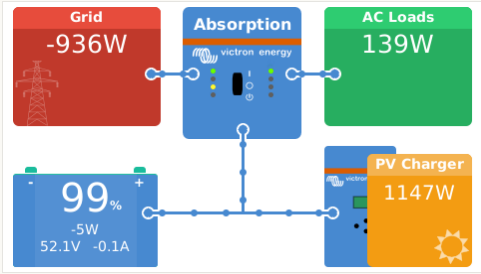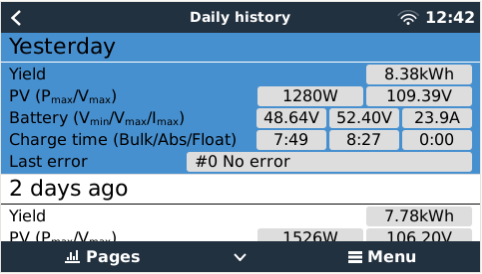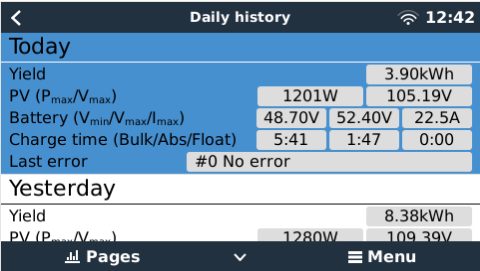I recently had my system upgraded and settings set as per your "Victron & Pylontech US2000B and Phantom-S" manual dated 2019-01-22 14:42.
System has following devices and firmware ;
Color Control GX v2.23.
Multiplus 48/5000/70-100 v433.
BMV-702 v3.10.
BMS Pylontech with 4 x US2000B Plus batteries.
BlueSolar Charger MPPT 150/100 v1.39.
On running with DVCC for 3 sunny days, I got the following ; Note : During "Absorption" phase, System Battery Voltage reached 52,29 V and SOC 98%.
Note : During "Absorption" phase, System Battery Voltage reached 52,29 V and SOC 98%.
Switched off DVCC and after a few days system stabilised as follows ;
Note : During "Absorption" phase System Battery Voltage reached 53,19 V and SOC 100%.
During "Float" phase System Battery Voltage drops to 52,98 V and SOC 100%.
I have also noticed the values of "Blue Solar Charger MPPT 150/100 - Networked operation - Charge voltage ; are 52,40 V with DVCC on, changed to 54,40 V when DVCC was switched off, and is 57,20 V when system is stable and fully charged. Where does this value come from ?
Any assistance to resolve this problem would be appreciated.
Thanking you,
Tim Mc Intosh







